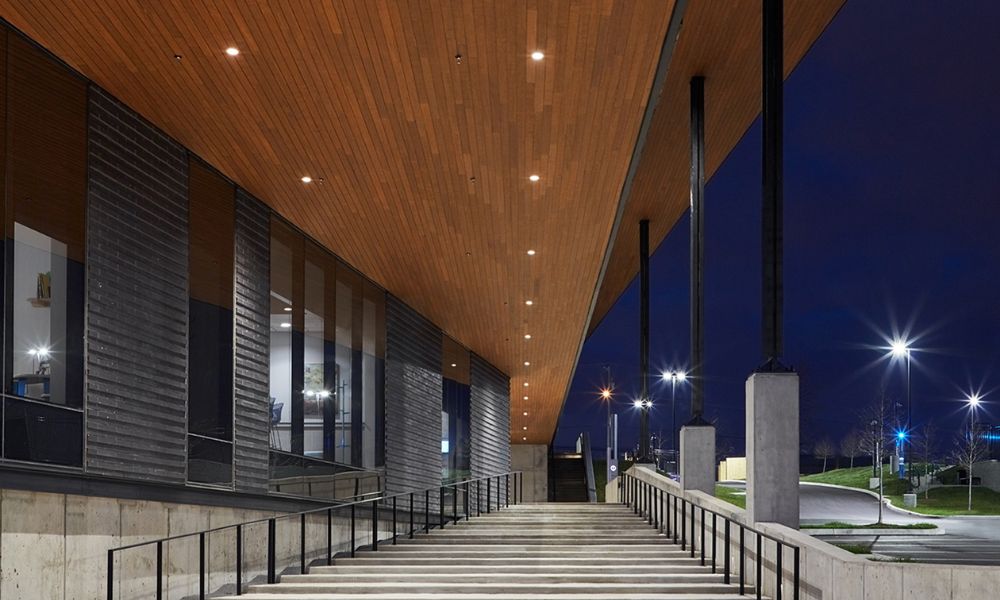Tips for Installing Bamboo Shiplap Soffit
By Steve
Posted on
Thursday, May 16, 2024 5:13 PM

As the construction industry evolves toward more sustainable practices, eco-friendly builders continually seek innovative materials that align with environmentally conscious values without compromising quality and aesthetics. Among numerous green building materials, bamboo shiplap soffit stands out for its durability, elegance, and sustainability, quickly becoming a favorite among builders dedicated to eco-friendly construction. Explore these tips for installing bamboo shiplap soffit.
The Aesthetic and Environmental Benefits
Bamboo soffit represents the pinnacle of green building materials. It not only transforms the aesthetic of any building with its classic espresso and epic cognac hues but also boasts a zero VOC, non-leaching profile that contributes to its eco-friendly status. Furthermore, its Class A Fire-Rated designation elevates the material’s safety and durability, making it suitable for interior and exterior applications.
Considering its environmental benefits and unparalleled elegance, the choice of bamboo soffit is a testament to a builder’s commitment to sustainability and design excellence.
Pre-Installation Preparations: Tools and Materials Needed
Before commencing the installation process of a bamboo shiplap soffit, ensure you have all the necessary tools and materials on hand. This tool lineup includes the dassoXTR Fused Bamboo Shiplap Soffit planks, custom-designed fasteners like ASF-FS2-BK, starter clips such as ASF-SC1-BK for the initial row of planks, and standard carpentry tools for measuring and cutting. Detailed preparation steps and a comprehensive list of required materials are available on dassoXTR’s resource page.
Step-by-Step Guide to Installing Bamboo Soffit
Let’s get into the installation details and tips of the bamboo shiplap soffit.
Measuring and Cutting
Initiate the installation by accurately measuring the space where you’ll install the soffit. Following the dimensions, cut only the first and last plank of bamboo soffit to stagger the joints of each row, paying close attention to maintaining more than 12 inches of distance between each joint between the rows for a random, even look.
Fastening and Securing
Secure the first row of bamboo planks along the desired section, starting with the starter clips. Proceed to install the subsequent rows using the custom-designed fasteners, ensuring each plank fits snugly against the next for a uniform and smooth appearance. This method simplifies installation and reduces time and product wastage by up to 50 percent because you only cut the first and the last plank of every row compared to traditional wood plank installations, which require cutting of every plank. On the very last row, use the countersink drill bit to drill the holes,
then add screws and plug the screw holes with Eisen D-Plugs.
Finishing Touches
Once you’ve fastened all planks, apply the finishing touches by checking for any irregularities and making necessary adjustments to touch up any scratches and stain the Eisen D-Plugs. The unique feature of dassoXTR’s bamboo planks is that they are pre-oiled, which allows for an immediate, impeccable finish.
Bamboo Soffit Maintenance
Bamboo soffit is renowned for its low maintenance and long-lasting qualities. Regular cleaning and occasional inspections will keep the soffit looking its best. For specific maintenance guidelines and best practices, refer to dassoXTR’s detailed instructions.
The rise of bamboo shiplap soffit within eco-friendly construction practices heralds a new era of sustainable building. Not only does it offer an attractive and durable alternative to traditional materials, but it also demonstrates a commitment to environmental responsibility and innovative design. By choosing bamboo soffit, builders contribute to the advancement of green building and instill a sense of pride and distinction in their projects, paving the way for a more sustainable future in construction.